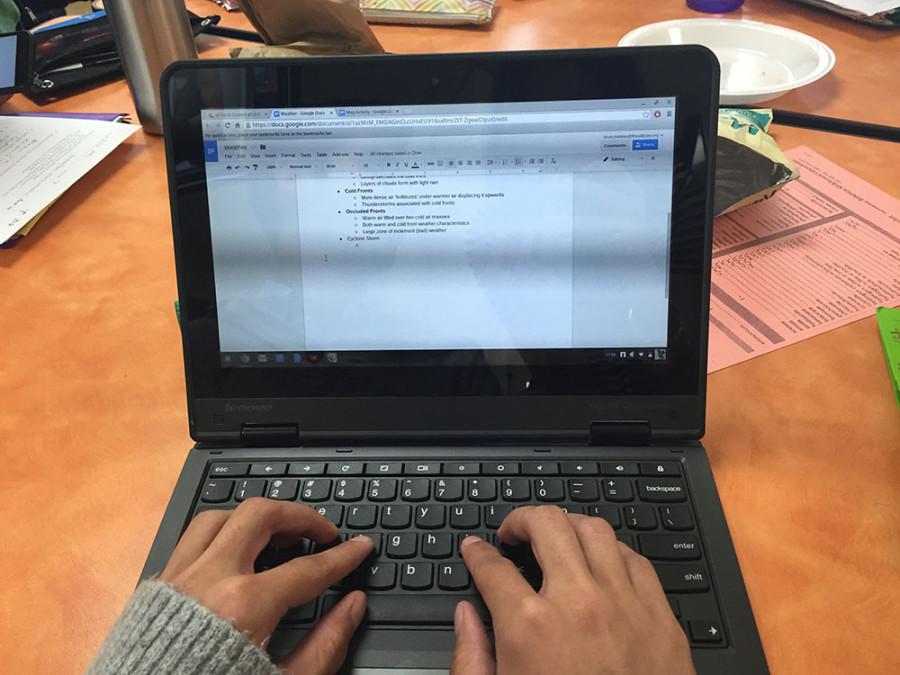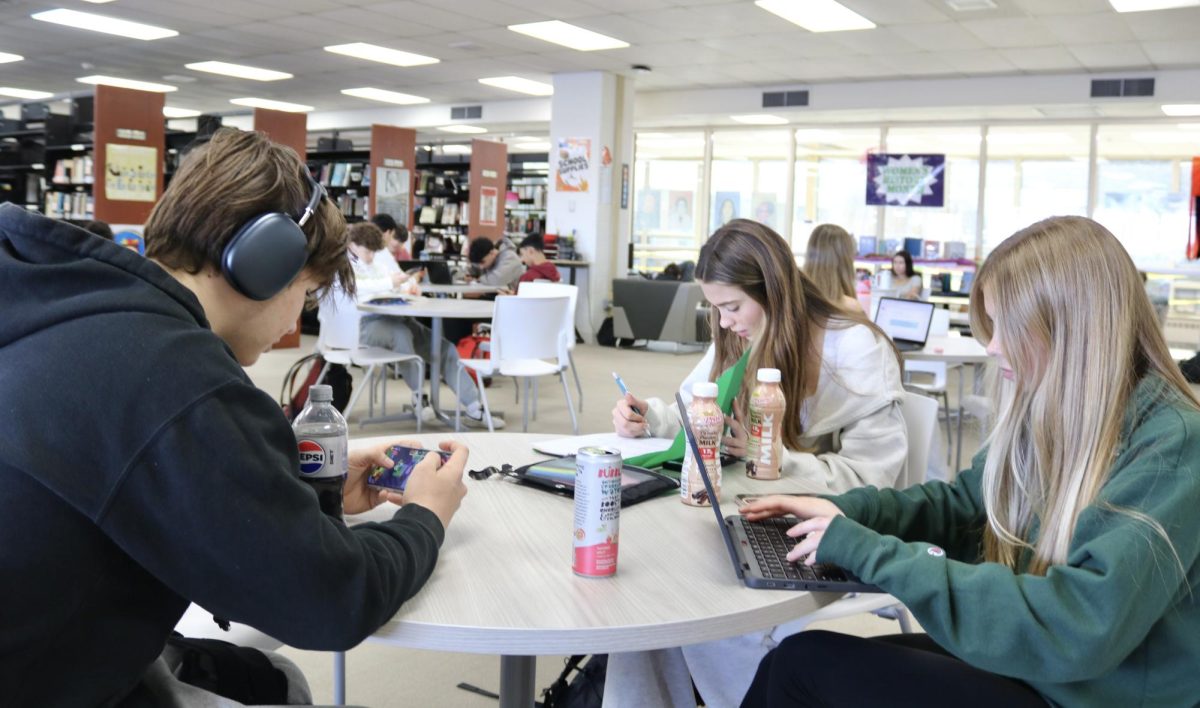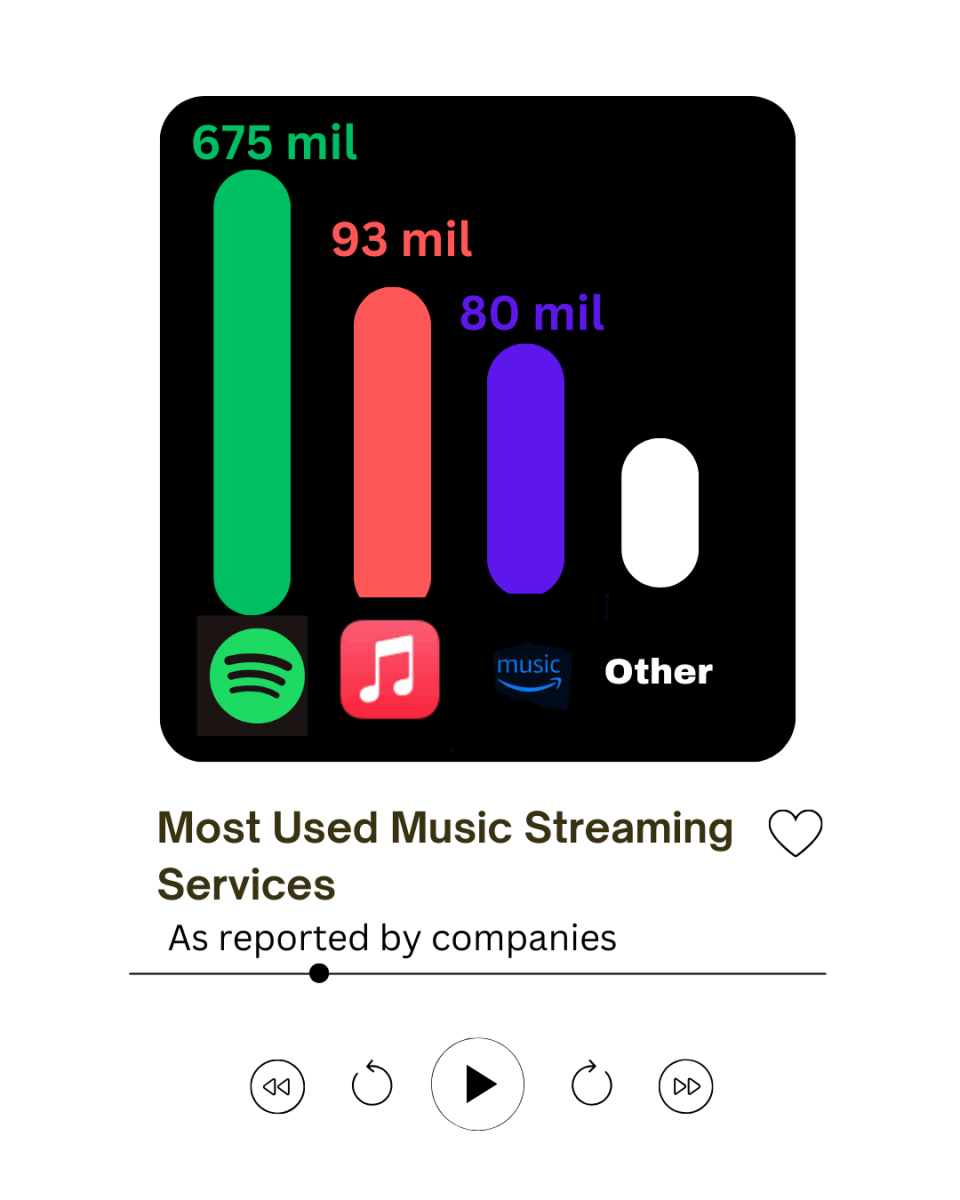Since the beginning of April, select classes have been chosen to participate in the Chromebook pilot program at LHS and although there have been many negatives to the program, the benefits have been shown to outweigh the harms.
Selected classes are helping to test and give feedback about the new touch-screen Lenovo Chromebooks that all students will receive next year. According to Physical Education and Driver’s Ed teacher Mr. Bryan Wilcox, who is a teacher involved in the pilot program, a couple of classes were chosen from each academic department. Administration looked for classes with two sections being taught and looked to cover all different ages and class content.
Although students have been using Chromebooks in class all year, students receiving their own devices has positively impacted the normal classroom set up.
For instance, Mr. Wilcox’s physical education class that was chosen for the Chromebook pilot program can use their Chromebooks to break down the movement and mechanics of any physical activity that they do. Mrs. Nora Kostro’s Spanish four class, which was also chosen for the pilot program, can work on grammar in a Google Doc, while Mrs. Kostro is able to quickly view students’ work and give feedback on it.
Many students have enjoyed receiving the portable devices that are available to them at all times.
“I can use [my Chromebook] whenever I need to without going to a resource center like the MASH or the DIL,” sophomore Kevin Loumeau, who received a Chromebook from his gym class, stated.
One of the biggest advantages of having a Chromebook is that students are able to have access to their personal Chromebooks at all times. Since places like the Write Place, MASH, and DIL do not allow food and are quiet places that allow only minimal talking, students with a Chromebook can socialize and eat in the cafeteria, while also getting their schoolwork done.
Having a Chromebook also makes class time easier because when students have to go get Chromebooks during class, the students who already have these devices have them at their fingertips and are already logged in.
Sophomore Sarah Mateer does not have Chromebook, but she does use her brother’s and friend’s Chromebooks daily.
“Using a Chromebook has impacted me because I do not have an accessible computer at home. We have two computers and one is really difficult to use and my brother is always using the other computer,” Mateer commented.
A lot of teachers have begun to give out online assignments and having a Chromebook makes doing online homework a lot easier for students who do not have a computer accessible to them at home.
“I think the use of technology and Chromebooks can enrich a classroom and open up resources for students and teachers that were previously unavailable,” Mr. Wilcox expressed.
Google is constantly adding various extensions and programs to benefit schooling. Mr. Wilcox has been using a program called “Flubaroo” that gives teachers feedback from students about how well they understand new material that they learn in class.
Although there are many pros to the usage of Chromebooks, there are few cons.
Both Loumeau and Mateer stated that the Chromebooks are very heavy and a hassle to carry. Students also have to remember to charge them daily and many teachers do not have attainable chargers in class for students to use. The tablets can be extremely distracting for students during classes. An anonymous sophomore student interviewed claimed that he oftentimes plays Solitaire during class when he should be doing work.
Mrs. Kostro thinks that although the Chromebooks are a great piece of technology, they are heavy and some students right now are in a transition period where they have to carry both the Chromebook and textbooks.
Some students also have a problem with connecting the Chromebooks to their printers and getting accents on their letters when typing for a foreign language class.
While there are still reservations on the use of chromebooks, the majority of students and faculty see the benefits of chromebooks as outweighing the speculative negatives; its portability, easiness to use, and introduction to new programs, have allowed a school built in the 20th century to teach a generation of the 21st century.









